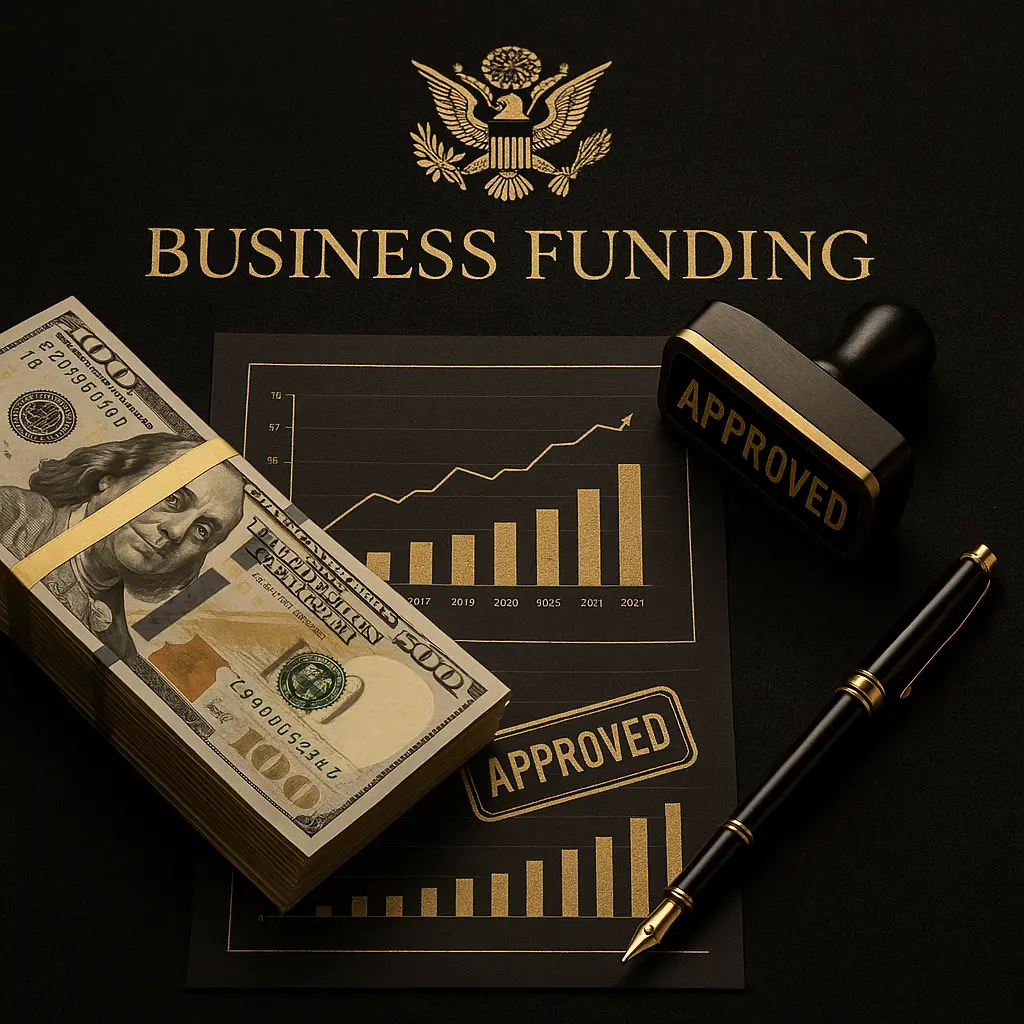Government Subsidy Loan for Business: How to Qualify & Apply in 2025
In 2025, India’s entrepreneurs and small businesses will have unprecedented opportunities to grow with government support. Government subsidy loans for business are special loans offered at lower interest rates or with partial repayment subsidies.
These programs target micro, small, and medium enterprises (MSMEs) – including new startups, women-owned firms, SC/ST entrepreneurs, and rural units – helping them invest in technology, expand operations, and create jobs.
In India’s economic development, subsidy loans play a vital role by promoting entrepreneurship, boosting exports, and empowering disadvantaged groups. For example, the 2025-26 Union Budget doubled credit guarantee covers (from ₹10 Cr to ₹20 Cr for start-ups), and launched new term loans up to ₹2 Cr for first-time women/SC/ST entrepreneurs.
In this post, we’ll explain what government subsidy loans are, how they differ from grants or regular loans, and why they matter for MSMEs and startups.
You’ll learn who qualifies (startup vs. MSME vs. special category), what documents you need, and how to apply through platforms like the Udyam portal, banks, or SIDBI. We’ll detail major schemes in 2025 – PMEGP, MUDRA, Stand-Up India, CGTMSE, TUFS, National SC-ST Hub, Startup India, and SIDBI’s SMILE fund – including their objectives, eligibility, subsidy amounts, and application steps.
We’ll also share expert tips (clean credit, realistic plans, timing) and success stories: a woman entrepreneur (Stand-Up India) and a rural MSME (PMEGP) that thrived on subsidy loans. By the end, you’ll know exactly how to qualify and apply for a Government Subsidy Loan for Business in India.

What is a Government Subsidy Loan for Business?
A government subsidy loan is a business loan backed by government funds or guarantees, making it cheaper or easier to get than a regular loan. In practice, this means the interest rate is lower or part of the loan (or interest) is paid by the government.
Unlike a grant (which you don’t repay) or a normal loan (fully repayable at market rates), a subsidy loan blends both: you borrow money and repay it, but on preferential terms. For example, the government might absorb 25–35% of your loan cost, so you effectively pay interest only on the remaining amount.
These loans aim to promote specific goals: creating jobs, modernizing industries, encouraging exports, and supporting underrepresented groups. Beneficiaries are typically MSMEs, startups, women entrepreneurs, SC/ST entrepreneurs, and rural businesses.
Sectors commonly supported include manufacturing, agriculture-based industries (food processing, leather, textiles), technical services, and rural crafts. Some schemes target greenfield projects (new enterprises) or the upgradation of existing units.
Key differences between a subsidy, a grant, and a loan:
- Subsidy Loan – Borrow and repay, but at a subsidized cost. The government may cover part of the interest or provide collateral relief.
- Grant – A grant is a financial boost awarded without any repayment obligation, usually granted through a merit-based selection to fuel specific missions, like groundbreaking research, inventive projects, or transformative ideas.
- Loan – Regular loan from a bank or NBFC, repayable with interest, usually requiring collateral and higher interest.
In short, government subsidy loans make financing accessible and affordable. They typically come with lower interest rates, longer tenures, and sometimes no collateral requirement.
These perks help small businesses that might otherwise struggle to get credit. For example, Mudra loans under PMMY are collateral-free for amounts up to ₹50,000, and schemes like CGTMSE guarantee loans up to ₹5 Crore without collateral.
Key Benefits of Government Subsidy Loans
Government-backed loan schemes offer significant benefits for small businesses and startups:
- Low/No Collateral Requirements: Many schemes do not require collateral for small loans. For instance, PMMY (Mudra) provides collateral-free loans up to ₹50,000, and the CGTMSE guarantee enables banks to give secured loans without taking personal assets. This is a major advantage for entrepreneurs with limited assets.
- Lower Interest Rates: Subsidy loans often come at below-market rates. The government may subsidize the interest or cap it (e.g., Stand-Up India bank loans at base rate + 3% max). Mudra loans typically start around 8-10%, and SMILE loans by SIDBI have “attractive interest rates” geared to MSMEs.
- Subsidy on Principal: Initial Capital Assistance: Certain government schemes provide non-repayable support to lower the financial entry barrier for entrepreneurs. Under the PMEGP initiative, rural applicants from the general category can access a subsidy covering 25% of their project expenses, whereas those from special groups—such as SC, ST, or women—are eligible for up to 35%. Similarly, through the SCLCSS component of the National SC-ST Hub, SC/ST-owned MSMEs can receive a 25% subsidy (maximum ₹25 lakh) toward the cost of plant and machinery.
- Rural and Special Category Support: Targeted Uplift for Rural and Underserved Entrepreneurs: Several government schemes are purpose-built to foster entrepreneurship in rural regions and among historically underrepresented groups. PMEGP offers increased subsidy rates for rural-based projects over urban ones, while Stand-Up India provides loans ranging from ₹10 lakh to ₹1 crore to empower SC/ST individuals and women in rural areas. Further amplifying this support, the 2025 Union Budget introduced a landmark initiative to fund up to five lakh first-time SC, ST, and women entrepreneurs with capital assistance of up to ₹2 crore, driving inclusive economic growth from the ground up.
- Flexible Repayment & Longer Tenure: Subsidy loans often allow longer repayment periods and grace periods. SIDBI’s SMILE fund offers up to 10 years of repayment with a 3-year moratorium. Many schemes accommodate business cash flows.
- Business Incentives: Extra perks like training, mentoring, and automatic financing. For example, Stand-Up India includes skill development programs, and other MSME schemes may offer market linkages or tax benefits.
In short, these loans reduce financial burden and risk for small enterprises. As one government guide notes, “government subsidy loans offer reduced interest rates and subsidised loan amounts to help entrepreneurs….” This makes it easier to invest in equipment, technology or expansion, helping businesses grow, create jobs and contribute to the economy.

Who is Eligible? Common Qualification Criteria
Eligibility depends on the scheme, but common criteria include:
- Type of Business: Most schemes require a formal business registration (Udyam registration for MSMEs) and a viable project. Sectors typically include manufacturing, services, trade, agriculture-based industries, and rural crafts. Some programs (like PMEGP) exclude liquor-related units, while others (like Start-Up India) require innovation or a tech focus.
- Enterprise Size: Schemes target MSMEs (Micro, Small, Medium) as defined by investment/turnover limits. For example, a micro enterprise invests ≤₹1 Cr (plant/equipment) and turnover ≤₹5 Cr. Startups must often be DPIIT-recognized. Women-owned or SC/ST-owned units get special considerations.
- Special Categories: Many schemes specifically favor:
- Women entrepreneurs: Stand-Up India (women must hold ≥50% stake) and Mudra often give priority/subsidy to female-led businesses.
- SC/ST entrepreneurs: Stand-Up India covers SC/ST individuals (with 35% subsidy under PMEGP or NSSH schemes).
- Rural projects: PMEGP provides higher subsidy (up to 35%) in rural areas. DIC (District Industries Centre) levels, and schemes like Prime Minister’s Self-Employment Programme, specifically aim at rural youth.
- Greenfield vs. Expansion: Stand-Up India requires greenfield projects (new enterprise). Other schemes allow expansion of existing firms.
- Financial Eligibility:
- Credit History/CIBIL: Financial Credibility & CIBIL Health: A well-maintained CIBIL score, generally 700 or higher, is a key asset when seeking business loans. Although initiatives like CGTMSE support newcomers without requiring collateral, a clean and consistent credit history adds weight to the application. IIFL points out that MSMEs should demonstrate financial reliability and meet credit norms to improve their chances of securing financial backing.
- Turnover/CAPEX Limits: Schemes have caps. For instance, under PMEGP, the maximum project cost is ₹50 lakh (manufacturing) or ₹20 lakh (services). Mudra loans cap at ₹10 lakh (Tarun category). SIDBI SMILE offers equipment loans of ₹10–25 lakh.
- Government Registration: Udyam registration (MSME certificate) is usually mandatory. Some schemes require additional registrations (e.g., Startup India recognition for its schemes).
- Documentation Compliance: Up-to-date tax filings (GST returns) and audited statements (for larger loans) are typically required. IIFL notes that applicants must submit “financial records, creditworthiness”.
- Checklist: Generally, you should tick all:
- Indian citizen, ≥18 years old.
- Own/manage a registered MSME (Company, LLP, partnership, or proprietorship).
- Business in the eligible sector (manufacturing, services, trading, or MSME-targeted fields).
- For group applications: ≥51% stake by eligible category (women/SC/ST).
- Clear credit history and margins as required.
For example, under the Stand-Up India scheme, the borrower must be a woman or SC/ST, ≥18, and set up a greenfield unit. Under Mudra, any MSME with a viable plan can apply (Shishu, Kishor, Tarun). Under CGTMSE, any Udyam-registered MSME qualifies for guaranteed loans up to ₹5 Cr.
Always check scheme-specific guidelines, as each may have nuanced criteria (e.g., margin money contributions, age, and location requirements).
Top Government Subsidy Loan Schemes in 2025
Here are the major Indian subsidy loan schemes entrepreneurs should know in 2025:
PMEGP (Prime Minister’s Employment Generation Programme)
Spearheaded by the Ministry of MSME in partnership with KVIC, this flagship initiative offers credit-linked support to drive self-employment by helping launch micro-enterprises across rural and urban India. The scheme is open to individuals aged 18 and above, along with co-operative societies and small-scale units, aiming to establish new (greenfield) ventures in manufacturing, service-based industries, or traditional sectors such as Khadi and village-based crafts.
The scheme welcomes applicants from all income backgrounds, as there is no earning threshold to qualify. Subsidy support varies between 15% and 35% of the total project cost, with rural initiatives receiving higher incentives. For instance, individuals in the general category can access 25% assistance in rural zones and 15% in urban areas, while SC/ST and women entrepreneurs are eligible for enhanced support—up to 35% in rural regions and 25% in cities.
Max Project Cost: ₹50 lakh (manufacturing), ₹20 lakh (service). How to Apply: Apply online via the PMEGP portal or through KVIC/DICs. Submit the project report, business plan, and identity/business proofs to the bank/KVIC office. After the sanction, margin money (subsidy) is directly credited to the loan account.
MUDRA (Pradhan Mantri Mudra Yojana)
Geared to small businesses, MUDRA (through PMMY) provides unsecured loans up to ₹10 lakh. It has three categories:
- Shishu: loans up to ₹50,000 (for micro-enterprises).
- Kishor: ₹50k–₹5 lakh (expanding micro units).
- Tarun: ₹5 lakh–₹10 lakh (mature units).
Objective: Promote entrepreneurship by easy credit to micro-enterprises (trading, manufacturing, services). Eligible: Any new or existing MSME, proprietorships, partnerships or companies, for income-generating activities. Benefits: No collateral, no processing fee, interest rates around 8–10%. How to Apply: Online via the MUDRA website or through banks and NBFCs. Choose Shishu/Kishor/Tarun based on loan need, fill application (often integrated with PSBloansin59minutes portal), and submit KYC, business plan and proof of income. For lower loan amounts, the approval process is typically rapid—many cases are finalised within a short turnaround time of just a few days.
Stand-Up India Scheme
Designed to empower women and SC/ST entrepreneurs. Objective: Facilitate loans (₹10 lakh–₹1 crore) for greenfield manufacturing/service/trading businesses where at least 51% is owned by a woman or SC/ST person.
Eligible: Women and SC/ST individuals aged 18 and above can access support to launch new business ventures. Loans are offered by banks at interest rates not exceeding 3% above the base rate, and in most cases, collateral is not required as the credit is secured through the CGTMSE guarantee scheme.
The government also offers a 3% interest subsidy for women borrowers. How to Apply: Through the Stand-Up India portal (standupmitra.in) or at designated banks. The portal simplifies application, linking entrepreneurs with banks.
Required docs include the Udyam cert.. KYC, project report, SC/ST/women certificates, etc. After the sanction, loan disbursal supports start-up capital. As part of the 2025 budget, a newly launched scheme provides financial backing of up to ₹2 crore in term loans exclusively for first-time entrepreneurs from SC/ST backgrounds and women, aiming to accelerate their journey into entrepreneurship.
Credit Guarantee Fund (CGTMSE)
Not a direct subsidy loan, but a collateral guarantee scheme to encourage bank lending. Objective: Provide guarantees for MSME loans up to ₹5 crore, so banks lend without requiring security. First-generation entrepreneurs benefit as they can get 100% loans with only their own assets backing (no third-party guarantee needed).
Eligible: Any Udyam-registered MSME (manufacturing/service), retailer, educational institution, or SHG.
Coverage: Micro businesses with funding needs up to ₹5 lakh, including those led by women or based in the North East, are eligible for an 85% loan guarantee. For amounts between ₹5 lakh and ₹1 crore, the guarantee reduces to 75%, and for larger loans ranging from ₹1 crore to ₹5 crore, coverage is provided at 50%.
How to Apply: When you approach a bank for an MSME loan under ₹5Cr, the bank submits a guarantee application online via the CGTMSE portal. The scheme fast-tracks approval (usually within 48 hours). With CGTMSE backing, banks offer collateral-free loans up to ₹5Cr, greatly aiding new businesses.

TUFS (Technology Upgradation Fund Scheme)
For the textiles sector. Objective: Promote modernization in textiles by subsidising investments. Eligible: Textile/manufacturing units (spinning, weaving, processing, garments, jute, technical textiles, silk, power-looms) upgrading technology.
Subsidy/Benefits: Under the Amended TUFS (ATUFS), the government provides capital investment subsidies and interest reimbursement. Subsidy rates range from 10%–30%, depending on the segment. (E.g., 15% subsidy on garmenting/technical textiles up to ₹30Cr; 10% on weaving/processing up to ₹20Cr.) Also, lower interest on term loans.
How to Apply: Obtain a term loan from a scheduled bank for buying new machinery. Begin the process by submitting your application on the i-TUFS portal, including detailed project plans, Udyam or GST registration, financial records, and invoices for machinery purchases. Once sanctioned, the subsidy is deposited straight into your bank account. TUFS funding plays a key role in making textile unit upgrades more cost-effective and accessible.
National SC-ST Hub (SCLCSS Sub-scheme)
A special initiative for SC/ST entrepreneurs under the Ministry of MSME. Objective: Empower SC/ST-owned MSMEs in manufacturing/services. Key sub-scheme: Special Credit Linked Capital Subsidy Scheme (SCLCSS).
Eligible: SC/ST-owned proprietorships, partnerships, or companies (≥51% share by SC/ST). Benefit: 25% capital subsidy (up to ₹25 lakh) on institutional finance taken for plant/machinery. Example: if an SC-owned unit takes a loan of ₹10 lakh to buy machinery, ₹2.5 lakh is paid by the government. No sector restriction.
How to Apply: The Process is offline via a bank (the Prime Lending Institution). First, secure the full loan from a bank/NBFC. Then submit the SCLCSS application through that bank to the nodal agency (SIDBI/NABARD). The subsidy is released by the MSME ministry upon verification of invoices. Required documents include Udyam, PAN, caste certificates, and machine purchase receipts.
Startup India Credit Guarantee (CGSS)
The Start-Up India portal outlines the Credit Guarantee Scheme for Startups (CGSS). Objective: Encourage banks and NBFCs to lend to DPIIT-recognized startups by providing a government guarantee on loans.
Eligible: Startups (as per DPIIT) with sound business models, not in default. Coverage: Guarantee limit up to ₹20 crore per startup (raised from ₹10Cr). Eligible instruments include working capital, term loans, venture debt, etc.
How to Apply: Startups get credit from a registered Member Institution (bank/NBFC). The MI then seeks guarantee cover from National Credit Guarantee Trustee Co. (NCGTC) under CGSS. Thus, startups indirectly get easier loan access. (Do note: one must be a DPIIT-recognized startup and apply via a partner lending institution registered with NCGTC.)
SIDBI Make in India Soft Loan Fund for MSMEs (SMILE)
An SIDBI scheme supporting “Make in India”. Objective: Finance small enterprises’ capital needs via soft loans (debt that counts as quasi-equity).
Eligible: New and existing MSMEs (especially manufacturing/services) planning expansion or technology upgrades.
Loan Terms: Minimum ₹10 lakh, max ₹25 lakh, up to 10-year tenure (incl. 3-year moratorium). The promoter contributes at least 15%. Interest rates are “attractive” and set per enterprise profile. There’s also SMILE Equipment Finance for 3+-year-old firms to purchase machinery (up to ₹10L per unit, 6-year max tenor).
How to Apply: Approach SIDBI or a partner financial institution, submit a project proposal (with DPR and financials). Key docs: Udyam registration, financial statements, KYC, etc. The low-rate soft loan covers part of the promoter equity, easing funding. Benefits include long tenures, low equity demands and quick processing.
The application process for each scheme varies. Generally, visit the official portal or the implementing bank’s website, register (often via Udyam), fill out the scheme application form with project details, and upload documents. Always verify scheme deadlines and nodal agencies (KVIC, DICs, SIDBI, etc.). Use bank tie-ups like PSBloansin59minutes.com for quick MSME loans, where possible.
How to Apply in 2025
Applying involves clear steps and choosing the right channels. Here’s a practical step-by-step guide:
- Udyam Registration (MSME registration): Kick off the process by registering your venture on the Udyam portal—this step is vital for gaining formal MSME recognition, which is required to access most government-backed schemes. You’ll need to submit your PAN, Aadhaar, and essential business information. The Udyam certificate not only confirms your MSME classification but also serves as a key document in subsidy and loan applications.
- Select the Right Scheme: Research which scheme fits your needs (loan amount, sector, eligibility). For instance, a new rural unit by a woman might suit PMEGP or Stand-Up India, whereas an existing small enterprise may prefer CGTMSE-backed loans or SIDBI SMILE. Compare limits: Mudra caps at ₹10L, Stand-Up goes up to ₹1Cr, CGTMSE guarantees up to ₹5Cr.
- Prepare Documents: Gather documents in advance. Typical paperwork includes: Identity proof (Aadhaar, PAN), address proof, Udyam Registration certificate, business plan/project report, financial statements/bank statements (last 2-3 years), AUDITED if large loan. Other docs: Partnership deed or MOA, licenses, and scheme-specific papers (e.g. caste/women certificate for Stand-Up, sector licenses for TUFS).
- Choose Application Channel: Depending on the scheme:
- Online Portals: Many central schemes are on dedicated portals. For example, PMEGP has an e-portal; Stand-Up India and Startup India have their own websites. Mudra loans can start via the Mudra portal or PSBloansin59minutes (a government portal that quickly routes MSME loan apps to banks).
- Banks and NBFCs: Some schemes (CGTMSE, SMILE) require you to apply through a bank or SIDBI. Visit a bank branch (preferably where you already have an account) and request the subsidy loan; the bank will guide the process.
- District or State Agencies: Some schemes (PMEGP) can be applied through District Industries Centres (DIC) or KVIC offices. They often hold camps or workshops. Contact your local KVIC office for PMEGP guidance.
- Fill Application Form: Complete the official application form carefully. Include business details, project cost, loan amount required, and attach scanned documents. For online forms, upload as PDFs/JPEGs as instructed. Recheck every detail for correctness and make certain your business plan is both actionable and realistically aligned with your goals and resources.
- Submit and Follow Up: Submit the application as per the scheme instructions (online or in-person). After submission, note any reference number. You may receive an acknowledgment or “application number.” Some portals allow status tracking online. Otherwise, follow up with the bank or nodal agency.
- Loan Processing & Approval: The implementing body (bank, KVIC or SIDBI) will evaluate eligibility, project viability, and creditworthiness. They might ask for additional information or clarification. Schemes like PSBloansin59minutes target a very fast turnaround (some approvals in 59 minutes), while others might take a few weeks. For example, CGTMSE guarantees approvals within 48 hours.
- Loan Sanction & Disbursal: Once approved, you’ll get a sanction letter with terms. The government subsidy component is usually credited directly to the bank (not to you), lowering your loan principal or interest. The remaining loan amount is disbursed to your account, often in stages (e.g., after project milestones).
- Post-Loan Compliance: Use the funds as per the submitted plan. Most schemes require you to maintain records (receipts, utilization certificates). For claims-based subsidies (e.g. TUFS, SCLCSS), you may need to submit invoices and claim reimbursement through the respective portal.

Pro Tips:
- Avoid common mistakes: Always check deadlines and submit correct format. Incomplete or late applications are rejected.
- Financial readiness: Ensure your books and returns are in order. Lenders will scrutinize past financials.
- Professional help: If unsure, consult a financial advisor or use mentors (some schemes offer helpdesks or tie-ups with incubators).
- Use Government Portals: Government-run portals (Udyam, PSB loans) often guide you through the process and reduce paperwork.
By following these steps diligently, you can streamline the application process and improve your chances of approval.
Required Documentation Checklist
- Identity & Address Proof: Self-attested copies of Aadhaar card, PAN card, voter ID or passport. (Aadhaar is mandatory for Udyam registration and many bank processes.) Utility bills or rental agreement as address proof if needed.
- Business Registration: Copy of Udyam Registration (MSME certificate) or company incorporation certificate, partnership deed, or proprietorship registration certificate. Trade licenses or factory licenses, if applicable.
- Business Project Details: Project report or business plan summarizing the venture’s scope, financial projections, and cost estimates. Quotation/invoice for equipment or plant to be financed.
- Financial Documents: Balance sheets and profit & loss statements of the last 2-3 years (or since inception if newer). Income tax returns and GST returns. Auditor’s report if available.
- Bank Statements: Bank statements (both business and promoter accounts) for 6-12 months, to demonstrate cash flow.
- Collateral Documents: If collateral is required (less common under subsidy schemes), documents like property title deeds or lien documents.
- Category Certificates: If applying under a reserved scheme: SC/ST certificate, woman entrepreneur certificate, etc.
- Other Documents:
- No-objection or consent letters if multiple partners exist.
- Affidavit or declaration forms (some schemes have standard formats).
- Any scheme-specific forms (e.g., PMEGP application form, SCLCSS forms).
Checklists often include all of these. For example, credit advisors note that most subsidy loan schemes require personal IDs, Udyam cert, partnership deed, equipment invoices, and financials. Keeping both originals and copies handy can speed up inspection or verification. Proper documentation can make or break approval.
Expert Tips to Maximize Approval Chances
- Maintain Good Credit: Ensure Strong Credit Standing: A CIBIL score above 750 showcases your financial reliability to lenders. While CGTMSE may cover collateral requirements, banks still closely review your credit track record. Paying off existing liabilities beforehand can enhance your chances of loan approval.
- Realistic Financials: Don’t overstate projections. Use conservative sales forecasts. Lenders prefer credible business plans. Ensure your books are accurate and up-to-date (file GST and income tax on time).
- Clean Business Profile: If you have previous loans, avoid defaults. Resolve any legal or compliance issues beforehand. A “clean slate” gives confidence.
- Solid Business Proposal: Highlight how the loan will improve profitability and repayability. Include market analysis, expected revenues, and repayment plan in your project report.
- Right Timing: Apply when your business demonstrates some track record (even 6–12 months can help). Also, avoid applying at year-end (banks might have disbursal targets and may rush).
- Professional Presentation: Create a polished cover letter and neatly compile your documents in a well-organised folder with clear labels. Presenting your paperwork in an orderly manner allows the loan officer to review and verify details quickly and without hassle.
- Leverage Government Resources: Across various states, industry groups and government bodies often operate incubators or partner with NBFCs to ease access to MSME loans. Visit your state’s MSME department to find out if they have a dedicated facilitation centre that can assist with funding support and application guidance.
- Use Fresh Certificates: Ensure Udyam/SME registration is active and correct (update if turnover crossed thresholds). Mismatches often slow down approval.
- Follow Up Respectfully: After submission, politely follow up. Government portals or banks often allow online tracking. If delayed, enquire about missing info.
- Seek Co-working Partnerships: If unable to meet margin money requirements or paperwork, consider partnering with an NSIC (National Small Industries Corp) registered unit, as NSIC-Coir agri schemes sometimes ease collateral norms.
Applying with diligence and professionalism will significantly improve your chances of approval. Remember, the schemes exist to support you; aligning your application to their goals (job creation, innovation, social impact) helps too.
Real-Life Success Stories
1. Woman Entrepreneur (Stand-Up India): Priya Sharma from Rajasthan had a diploma in electronics and a dream of manufacturing LED lights. In 2023, she applied under Stand-Up India after registering her new firm (GreenGlow LEDs).
Despite little collateral, she secured a ₹50 lakh loan at base bank rate +3% %, backed by the scheme’s guarantee. The loan included a 3% interest subsidy for women, lowering her cost.
Priya invested in advanced machinery, created 15 jobs, and doubled her revenue in 2 years. She attests that Stand-Up India’s focus on women entrepreneurs and easy loan process was key: “Without this loan, we couldn’t have set up such a modern plant”.
2. Rural MSME (PMEGP): Ramesh Kumar of Uttar Pradesh owned a small family pottery unit but lacked funds to scale. In 2024, he applied to the local Khadi and Village Industries Commission (KVIC) office for PMEGP.
As a rural general category beneficiary, he received a 35% subsidy on a ₹20 lakh project cost. The remaining loan (₹13L) was disbursed through a bank at a low interest rate. With this, Ramesh bought an automated pottery wheel and kiln.
Now producing fine pottery, his income tripled, and he employed 8 locals. Ramesh emphasizes, “The PMEGP subsidy made equipment affordable. It turned our family craft into a viable factory.” His story illustrates how credit-linked subsidies empower rural entrepreneurs with modern tools.

Conclusion
In 2025, subsidy-backed government loans stand as a vital lifeline for Indian entrepreneurs—offering accessible financing, uplifting marginalised communities, and driving the modernisation and growth of small businesses across the country.
By understanding eligibility criteria and preparing documentation (Udyam cert, IDs, business plan, accounts), you can tap into schemes like PMEGP, Mudra, Stand-Up India and more. The key benefits – lower interest, partial grant/subsidy, and often collateral-free access – can significantly improve your project’s viability.
Take action now: Assess which scheme aligns with your business. Visit official portals (MSME.gov.in, Mudra.org.in, StandUpMitra.in) or your bank to learn requirements. Consider consulting Financekd for guidance on applications or a quick check of eligibility.
Our site (Financekd) provides detailed guides and one-on-one consultations to help you succeed. Don’t wait—apply, grow, and change your business’s future with a government subsidy loan.
If you found this guide useful, please share it with fellow entrepreneurs, subscribe for more updates, and contact us for personalized assistance. Let’s build a stronger MSME ecosystem together!



